source: https://www.anoopcnair.com/capture-windows-10-image-creation-using-mdt/
Let’s see how to create a custom image using MDT. This post will teach you how to capture Windows 10 image creation using MDT. I hope this post helps SCCM admins to create MDT custom images.
Introduction -Image Creation Using MDT
In my lab infrastructure, I’m using 2 VMs for capturing the image. In one VM, I installed the 2012 R2 server OS with MDT and installed the latest Windows ADK according to the Win 10 image. The second VM I’ll use to build and capture the image.
NOTE: If I want to capture Win10 1903 image, then the MDT server has to be updated with Windows 1903 ADK.
The first step is downloading the latest Windows 10 ISO from the MS VLSC (Volume Licensing Service Center) site. Open the deployment workbench console from the MDT server.
To open the MDT console, go to the search option and type deployment workbench.

Create New Deployment Share
Right-click on the deployment share, then click on New Deployment share.

Then choose the deployment share path and click on next.

Then provide the path name of the deployment share, click the next button, define the description according to the choice, and click next.

Choose the correct option according to the requirement in the options tab and click next.

Verify the settings according to the custom settings on the summary page and click next.

Once deployment share is created successfully, then click on finish. Now new deployment share will be made as below.
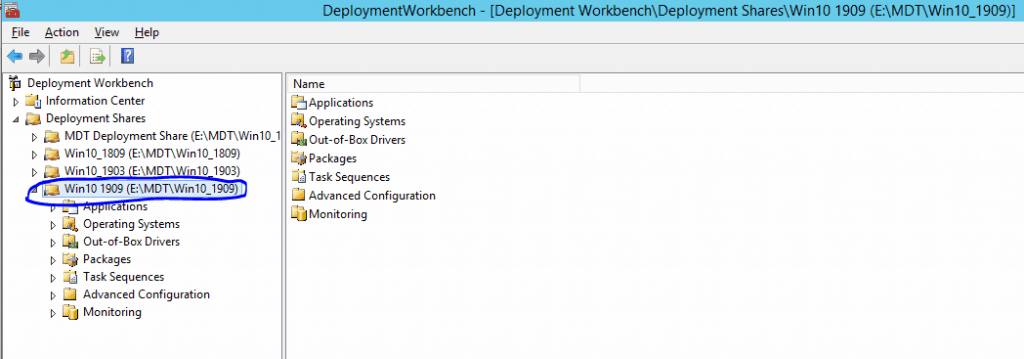
Import Operating System
Expand the deployment share, go to the Operating System step, and select the Import Operating System option to right-click.

Select the Full set of source files if you capture the CD or DVD drive image. Then click next.

Browse the CD/DVD drive in the source directory and click next.

Note: To map CD/DVD drive in the MDT share, open Hyper-V Manager, go to the MDT installed VM, and right-click on the settings.
Go to SCSI Controller DVD Drive and browse the ISO downloaded from the MS site.
Once the mounted ISO source is selected, provide the destination directory name and click next. According to the customization, verify the summary and click next.

Post next Operating system will be imported to the deployment share folder. Once the process is completed, click on finish.
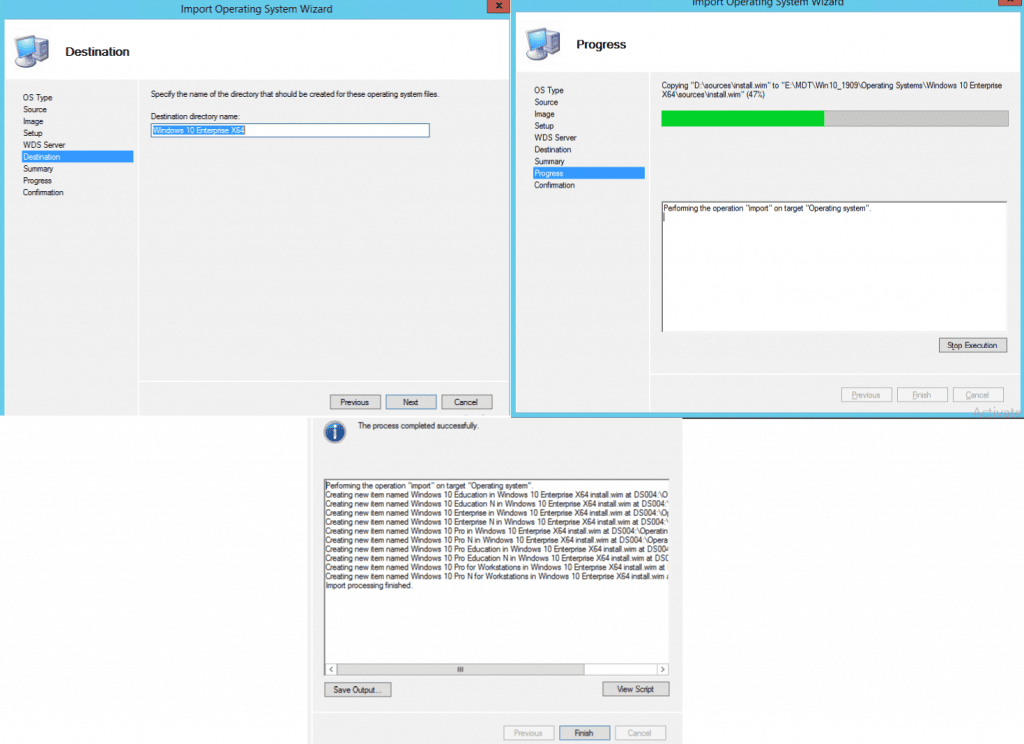
Select Windows 10 Version – Enterprise
Now all editions of the Win10 image.WIM will be available on the deployment share, keep the required ones and delete others.
In my case, I need the Win10 Enterprise Edition, so I’m keeping the same.

Select the wim file that must be deleted from the deployment share and right-click delete. Post validate the wim files and check the option “Completely delete these items, even if there are copies in the other folder.”
Click next and finish.
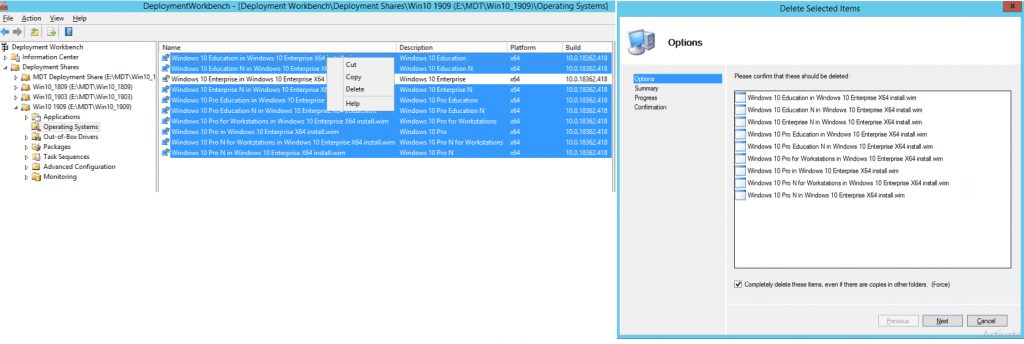
Create New MDT Task Sequence
Once the OS import step is completed, move to the “Task Sequence” step to create “New Task Sequence” and right-click to capture the image.

Provide the “Task Sequence ID” and “Task Sequence Name” and click next.

Task Sequence Template
Select the “Standard Client Task Sequence” template and click next. Then select the operating system which was imported earlier step and click next.
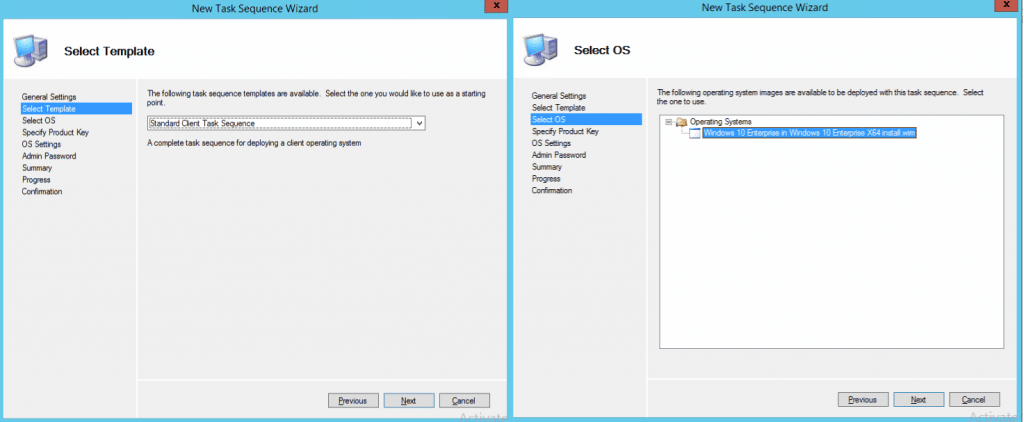
I’m not defining any product key in this step, as this will automatically activate from the KMS server. But this depends upon the requirement, and click next.
Provide the details in the “Full Name” and “Organization” fields and click next.
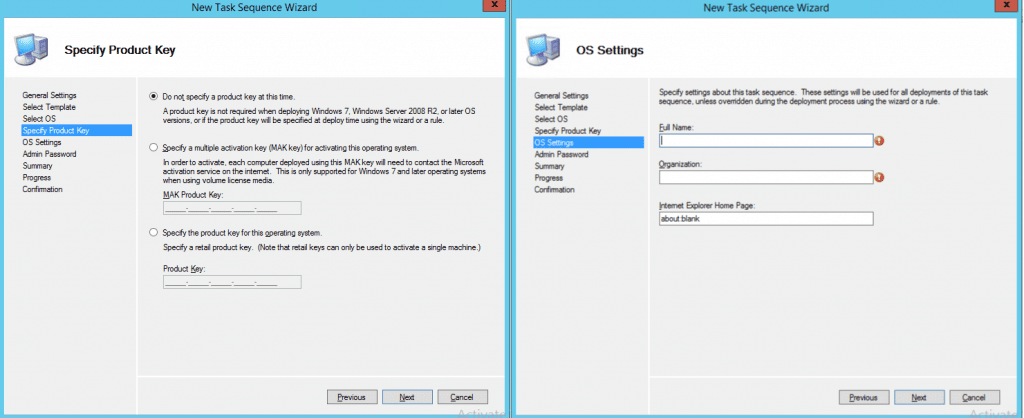
In this step, do not specify any “Admin Password” because password & other customization settings can be provided in the Bootstrp.ini file in deployment share properties and click next.
Verify the settings on the “Summary” file, click Next, and finish the step.

TS Structure
Now the task sequence will be created in the deployment share. Right-click on the task sequence and go to the “Task Sequence” tab to see the steps has been created.
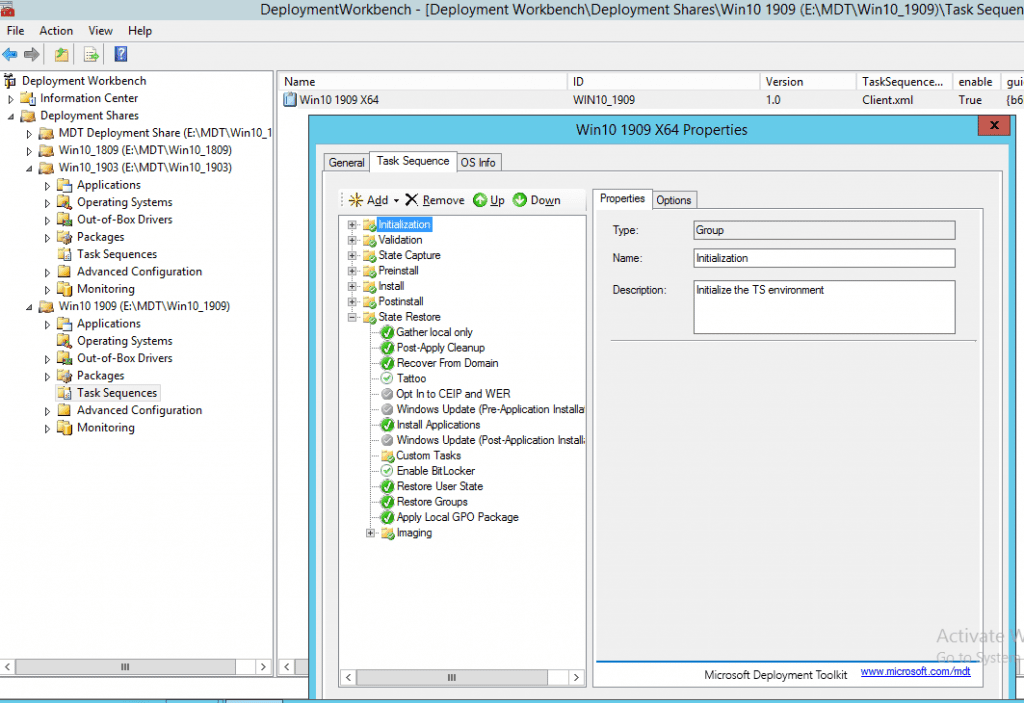
Bootstrap Settings
As the next step, right, clicks on the deployment share and go to properties, and uncheck the Platforms Supported “x86” in the “General” tab.
Then go to the “Rules” tab, modify the rule according to the requirement and click “Apply” & “Ok.” Also, change the “Bootstrap settings” in the deployment share Control folder.
Modify the Bootstrap as below:
SkipBDDWelcome=Yes
UserID=
UserDomain=
UserPassword=
SkipLocaleSelection=YES
KeboardLocale=0809:00000809
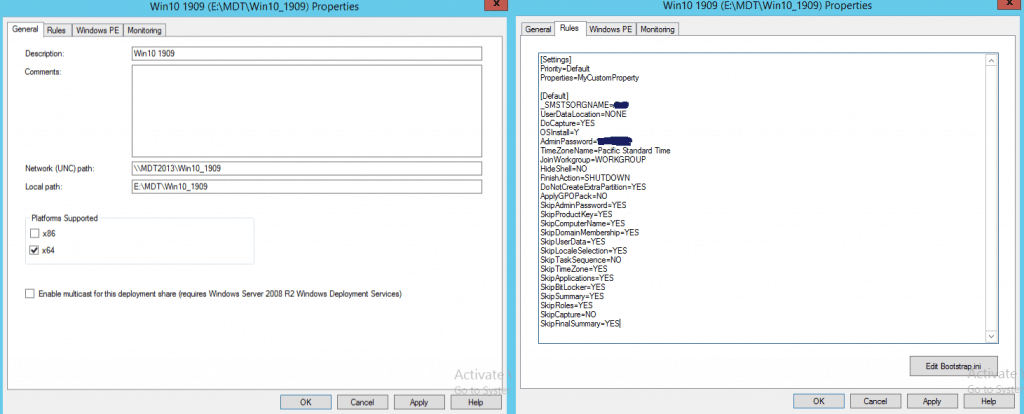
Update Deployment Share
Once all the customization settings are completed, then go to deployment share right, click and “Update Deployment Share.”

Regenerate Windows 10 Boot Image
Select completely regenerate the boot images and click next, and finish.

Once the deployment shares are successfully updated with the boot image, copy the LiteTouchPE_x64.iso from the deployment share “Boot” folder to another location. We can use the same boot image in VM 2 to capture the image.
Boot VM from ISO
The next step goes to Hyper V Manager. Then select the VM 2 right, click and click on settings, go to the DVD drive and browse the LiteTouchPE_x64.iso.
Once this is completed, go to the “Firmware” step to select the boot file, “Move up” the DVD drive to start to build, and click OK.
Turn on the VM and press any key to start booting from the CD option.
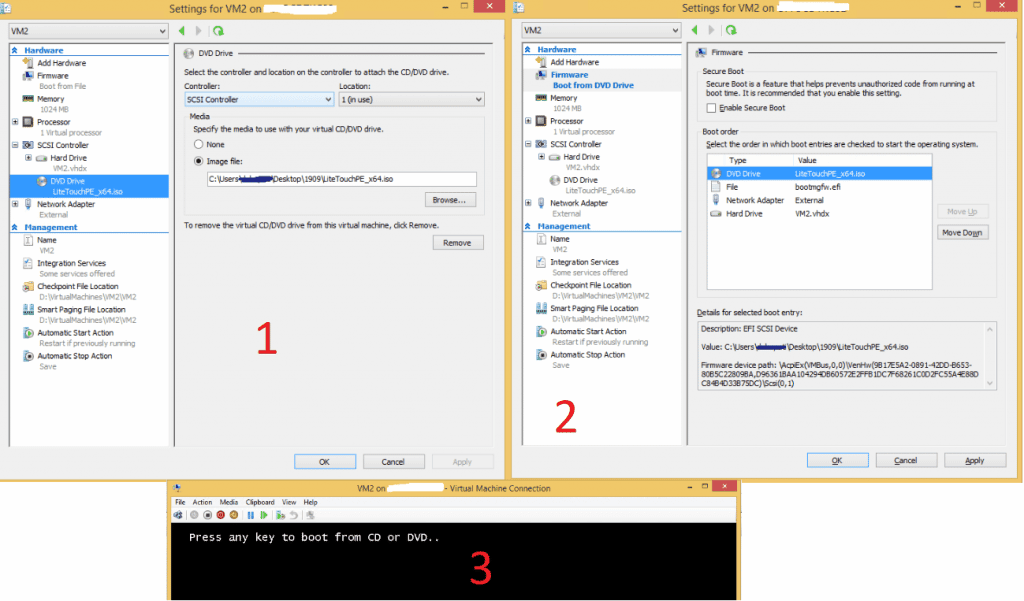
Result
Once booting starts below screen will appear. Then click on “Run the Deployment Wizard to install a new Operating System.”
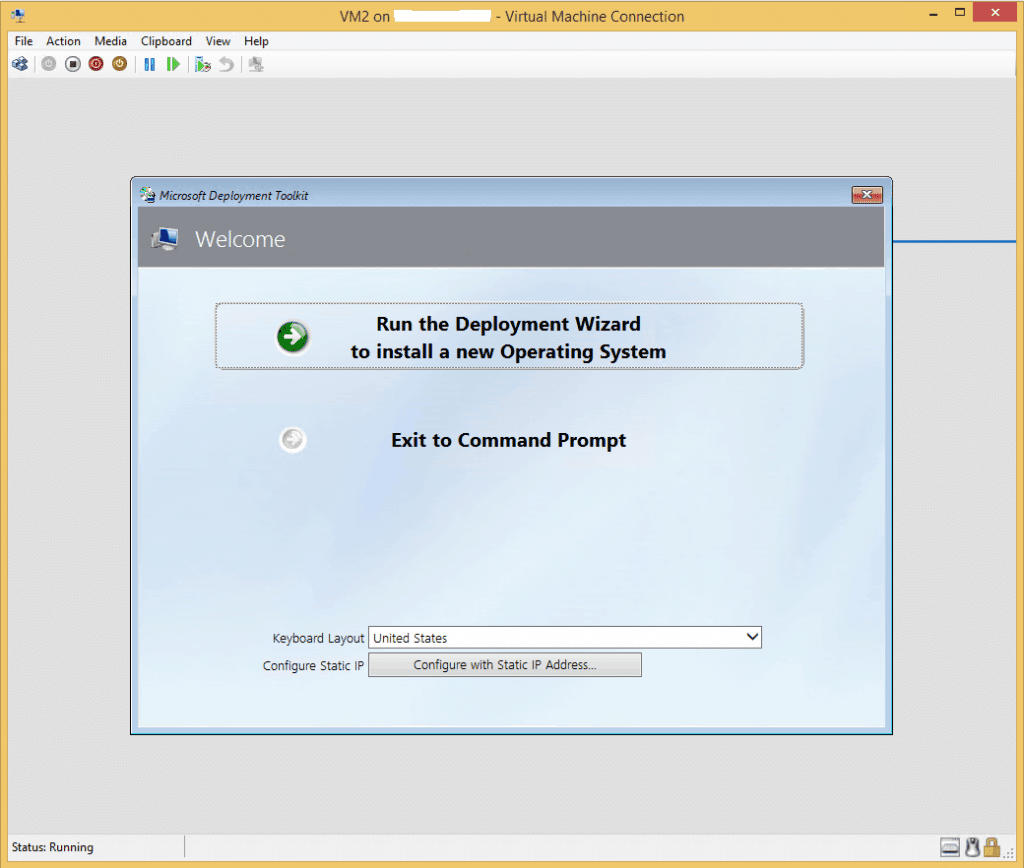
- Then provide the deployment share path where it has been created.

- To connect to deployment share, provide appropriate credentials to connect to the claim.

- Once it’s connected to the shared image, build and start as the next step. Just wait while the image capture is in progress.
- Once the capture is completed, the new WIM file will store in the “Capture” location.

- Once the WIM image is captured, the same file can be used in the SCCM console to create the “Operating System” package.